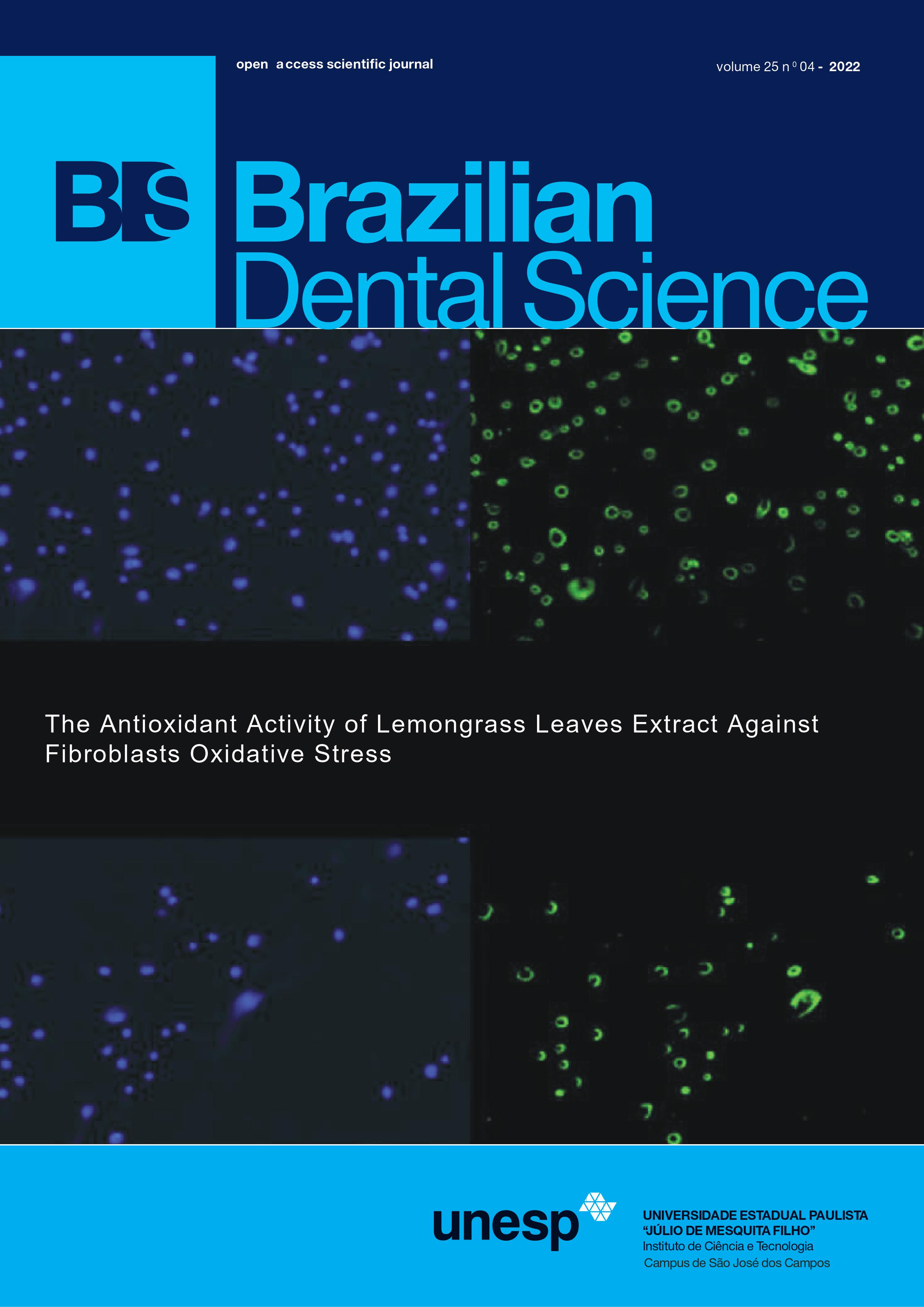Transcrestal sinus lift with simultaneous implant placement using osseodensification in posterior maxilla with residual bone height of 4-6 mm
DOI:
https://doi.org/10.4322/bds.2022.e3403Abstract
Objective: The aim of this study was to evaluate the transcrestal sinus lift using Osseodensification technique
with simultaneous implant placement. Material and Methods: In this case series 7 patients who needed
implant placement in the atrophic posterior maxilla were enrolled. In all the cases the residual bone height
between the sinus floor and the alveolar crest was 4-6 mm. Transcrestal sinus lift was performed using
Osseodensification with simultaneous implant placement. Cone-beam computed tomography (CBCT) were
obtained immediately postoperative and 6 months after operation. Implant stability using Osstell® were
assessed at the time of implant placement and implant exposure (6 months). Results: The results showed
that the mean bone height gain was 5.33±0.83mm at 6 months postoperatively. Mean bone density value
was 818.43±109.63 HU. Mean ISQ value was 80.00±3.11 at 6 months postoperatively. The duration of
surgical procedure (minutes) ranged between 25-38 minutes with an average of 30.86±4.10 minutes.
Conclusion: The crestal maxillary sinus floor elevation using Osseodensification technique with simultaneous
implant placement provide superior results regarding bone density and implant stability and less duration
of surgical procedure.
KEYWORDS
Sinus floor augmentation; Bone substitutes; Alveolar bone loss; Osteotomy; Dental implantation; Cone-beam
computed tomography.
Downloads
Downloads
Published
How to Cite
Issue
Section
License
Brazilian Dental Science uses the Creative Commons (CC-BY 4.0) license, thus preserving the integrity of articles in an open access environment. The journal allows the author to retain publishing rights without restrictions.
=================




























